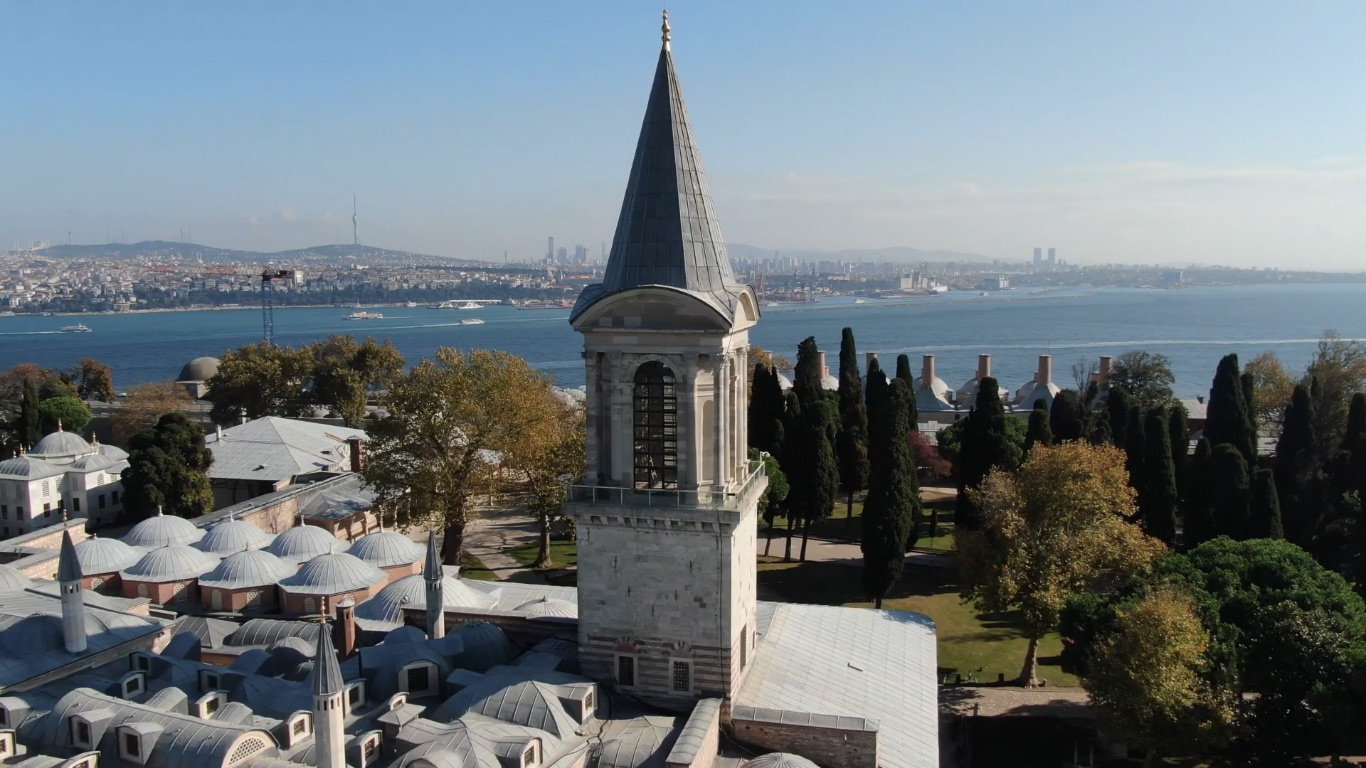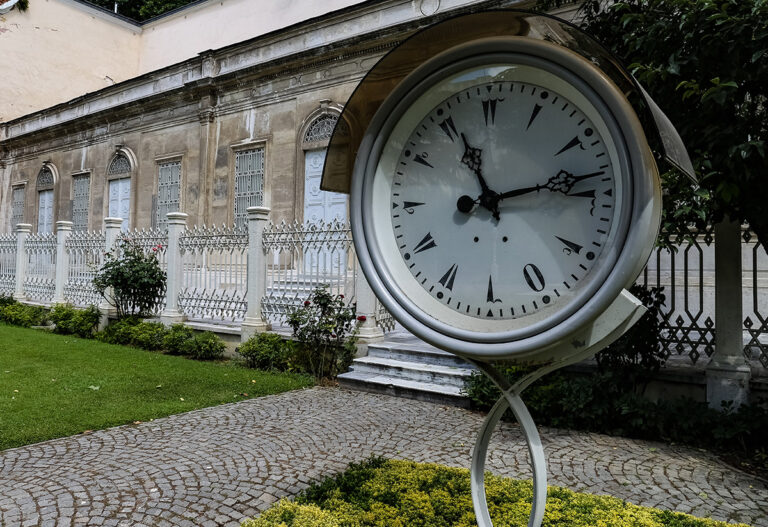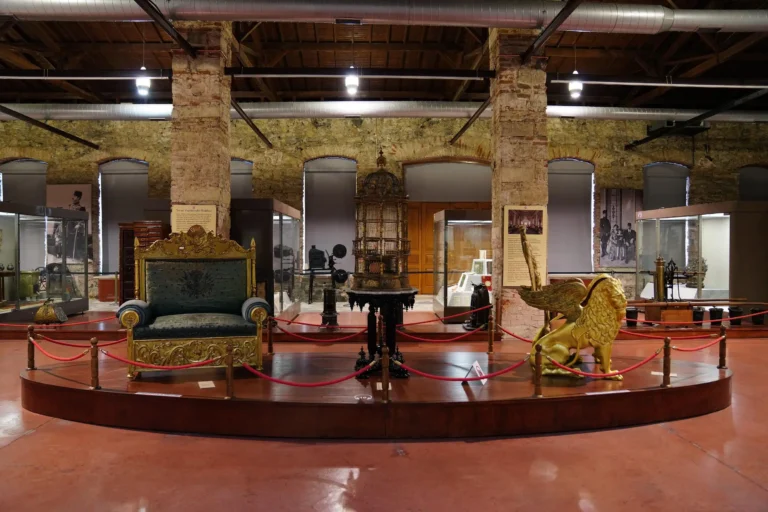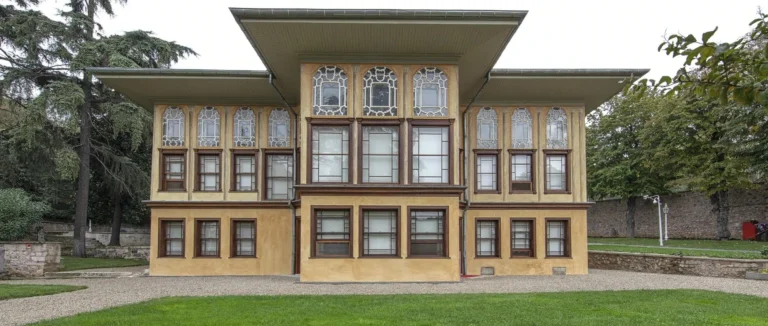Topkapi Palace: Residence of Ottoman Sultans and the Center of State Administration and Education
Topkapi Palace, constructed between 1460-1478 by Sultan Mehmed II (known as the Conqueror), served as the residence of the Ottoman sultans and a center for state governance and education. This palace, which underwent several expansions over time, was home to Ottoman sultans and the palace community until the mid-19th century.
Upon entering Istanbul, Mehmed II initially converted the Hagia Sophia Church into a mosque. He then transformed some churches and monasteries into Islamic educational institutions, kitchens for the poor, baths, and dervish lodges. It’s known that the existing imperial palace buildings in the city were not utilized by the Ottomans.
Mehmed II embarked on an ambitious construction and transformation program. He laid the foundation for a grand complex, which would serve as an educational center for the religious class, on the site of the old Church of the Holy Apostles (1462-1470). For residence and state administration, he initiated the construction of two successive palaces. The first, located in the city center, later known as the Old Palace (Saray-ı Atîk, 1454-1458), was situated in today’s Beyazıt Square area, near Istanbul University’s main building and the Süleymaniye Mosque. This walled structure lost its significance with the construction of the New Palace (Topkapi Palace) and became a residence for the families of deceased sultans.
Our knowledge of the Old Palace comes from written sources and miniatures. After this first palace, Mehmed II constructed the Çinili Köşk (Tiled Pavilion), followed by Topkapi Palace, to which he would eventually relocate. He named this palace “Saray-ı Cedid” in Ottoman Turkish, meaning “New Palace”.
The name “Topkapi Palace” emerged following the destruction of a large wooden coastal palace, built near the Byzantine walls by Sultan Mahmud I and named for the cannonballs (tops) stationed outside. After this coastal palace burned down, its name was transferred to the New Palace.
The layout of the continuously expanding Topkapi Palace was greatly influenced by Ottoman state philosophy and the palace-subject relationship. It was also inspired by the grandeur and layout of the Edirne Palace, built by Mehmed II’s father, Sultan Murad II, on the banks of the Tunca River, of which only ruins remain today.
Topkapi Palace’s layout comprises various courtyards and gardens, administrative chambers for state affairs, residential buildings and pavilions for the ruler, and housing for palace staff. At one point, it housed nearly 4,000 people. Constructed on the Byzantine acropolis at Sarayburnu, between the Sea of Marmara, the Bosphorus, and the Golden Horn, Topkapi Palace is enclosed by 1,400-meter-long walls on the land side and Byzantine walls on the seafront.
Covering an area of approximately 700,000 square meters, a significant part of the palace grounds is dedicated to the Hasbahçe (Gülhane Park). The palace complex includes three main gates, four courtyards, the Harem, Hasbahçe (Gülhane Park), and other gardens.
Despite being a modest structure compared to other imperial expenditures on magnificent mosques, barracks, bridges, caravanserais, and lodging facilities, Topkapi Palace possesses its own unique buildings, exquisite tiles, and a harmonious integration with nature. Its location on Sarayburnu adds to its natural beauty and grandeur. Moreover, the palace’s rich collections and intriguing history make it one of the world’s most remarkable palaces.
In the early 1850s, due to the existing palace’s inadequacy for 19th-century state protocols and ceremonies, Dolmabahçe Palace was constructed between 1843-1856. Subsequently, the royal family and the administrative center were completely relocated to Dolmabahçe Palace. However, the imperial treasury, Sacred Relics, and imperial archives remained in Topkapi Palace, which continued to host state ceremonies due to its symbolic significance and housing of the Sacred Relics.
The first time Topkapi Palace was opened to visitors like a museum was during the reign of Sultan Abdülmecid, who showed the palace treasury to the British ambassador. This tradition of showcasing the palace’s antiquities to foreigners continued, and during the reign of Abdülaziz, glass display cases were installed for this purpose. Although there were considerations to open Topkapi Palace to the public during the Ottoman era, it never materialized.
On April 3, 1924, following the order of Mustafa Kemal Atatürk, the founder of the Republic of Turkey, Topkapi Palace was opened to the public. Today, it stands as one of the world’s most significant museum palaces. Besides being an architectural museum, various spaces within display the Ottoman dynasty’s clothing, personal items, gifts, and the palace’s rich porcelain and weapons collections. The Topkapi Palace Museum also boasts an incredible collection of wood, metal, fabric, and jewel artifacts dating from the 15th to the 19th century. Its collection of early Islamic history artifacts, known as the “Sacred Relics”, elevates the palace to a sacred status among Muslim visitors. The palace also houses a library with one of the world’s most valuable collections of miniatures, manuscripts, and archival materials.
The extensive gardens, where different pavilions were constructed in various periods, also featured areas for playing traditional sports like jereed (javelin) and archery. On special occasions, large tents were erected in the gardens and courtyards. Today, the Çinili Köşk (Tiled Pavilion), constructed by Mehmed II in 1472, stands as the most significant of these structures and is among Istanbul’s oldest examples of Ottoman civil architecture.
Today, the palace attracts large numbers of tourists and is a foremost historical site within the UNESCO World Heritage-listed Historic Areas of Istanbul.
Visitor’s Guide to Topkapı Palace Museum in Istanbul
The Topkapı Palace Museum is one of Istanbul’s most significant historical and cultural treasures, frequently visited by both local and international tourists. This guide provides essential information for those planning a visit.
Contact Information
- Phone: 0 (212) 512 04 80
- Fax: 0 (212) 259 32 92
- Email: [email protected]
- Address: Cankurtaran Mah. Babı Hümayun Cad. No: 1 Sultanahmet/Fatih, Istanbul
Visit Information
- Closed Days: Tuesday
- Ticket Booth Opening Time: 09:00
- Ticket Booth Closing Time: 17:00
Holiday and Festive Day Visiting Hours
- New Year’s Day: Closed
- April 23, May 1, May 19, July 15, August 30, October 29: Open
- First Day of Ramadan and Sacrifice Feasts: Closed
- Remaining Days of Feasts: Open
Ticket Prices
Combined Ticket I (Topkapı Palace + Hagia Irene)
- Domestic Visitors: 150 TL
- Foreign Visitors: 750 TL
- Discounted: 50 TL
Combined Ticket II (Topkapı Palace + Hagia Irene + Harem)
- Domestic Visitors: 200 TL
- Foreign Visitors: 950 TL
- Discounted: 60 TL
Harem Entrance
- Domestic Visitors: 80 TL
- Foreign Visitors: 350 TL
- Discounted: 30 TL
Hagia Irene Entrance
- Domestic Visitors: 60 TL
- Foreign Visitors: 300 TL
- Discounted: 25 TL
Museum Card Information
The Museum Card is not valid in certain areas such as the Harem and Hagia Irene sections of Topkapı Palace, and the Dolmabahçe Palace Selamlık section.
Location Information
The museum is located in Istanbul’s historic Sultanahmet area, close to landmarks like the Hagia Sophia and the Sultanahmet Mosque. Various public transportation options are available for easy access to the museum.
This information will be helpful for visitors to the Topkapı Palace Museum, ensuring a pleasant and enriching cultural experience.
The Tower of Justice

The Kasr-ı Adl, also known as The Tower of Justice (Adalet Kasrı) of Topkapı Palace, stands as a concrete symbol of the grandeur and power of the Ottoman Empire. This tower, competing in height with the minarets of historical monuments like the Hagia Sophia and the Sultanahmet Mosque, is one of Istanbul’s iconic structures. Its elegant and captivating architecture not only embodies the physical presence of the palace but also its administrative and judicial significance.
Reconstructed in the 17th century after a fire, the Kasr-ı Adl is regarded as one of the most refined examples of Ottoman architecture. Although similar towers existed in other palaces and significant mansions of the Ottoman era, the one in Topkapı Palace holds a unique place in terms of both its structure and historical importance.
One of the tower’s most striking features was its role in hosting the Divan-ı Hümayun meetings, akin to today’s cabinet meetings, where the empire’s most crucial decisions were made. The tower’s entrance from the harem and the Kafes-i Hümayun window facing the Divanhane underscore its importance.
Perhaps the most dramatic moments in the history of Kasr-ı Adl were its witnessing of execution scenes. For instance, the execution of the rebel Hüseyin Paşa in 1600 was observed by Sultan Mehmed III from within this tower. This incident vividly illustrates how the sultan symbolized justice and the role these towers played in its dispensation. Hüseyin Paşa, looking into the eyes of the sultan, pleaded for mercy in a final, desperate attempt, but his fate was unaltered. Such moments demonstrate that the Kasr-ı Adl was more than just a vantage point; it served as a concrete symbol of justice in the Ottoman Empire, bearing witness to history.
Thus, the Kasr-ı Adl remains a testament to the architectural and historical richness of the Ottoman Empire, continuing to inspire awe even today.







